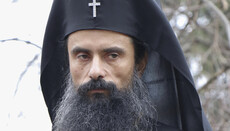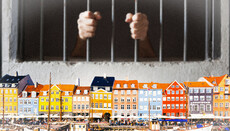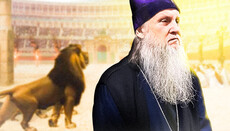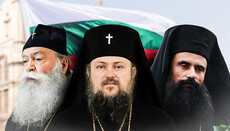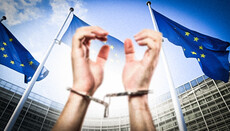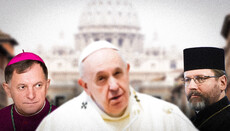Commemoration of the Patriarch: historical context
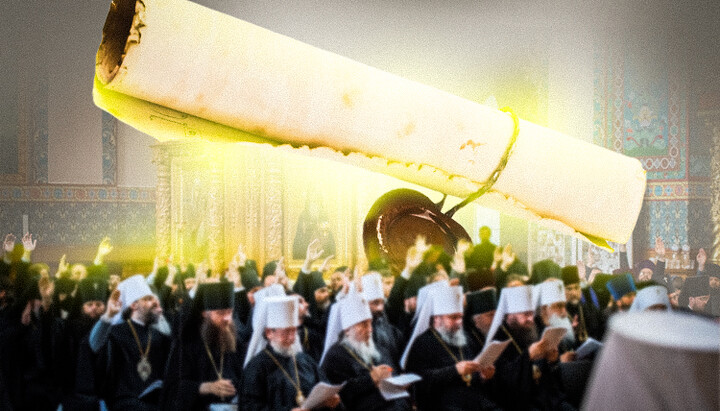
Today the commemoration of the Patriarch at the liturgy is perceived by many as a necessary condition for personal salvation. We tell you when and why it appeared in the Russian Church.
More than a year and a half has passed since the Council in Feofania, and we can say that its decisions were generally accepted by the Church and the people of God without pain. Nevertheless, sometimes one can still find cases in which individual clerics, monastics and laity feel justified in doubting some of the decisions of the Council. This is especially true of mentioning the Patriarch's name at the Divine Liturgy. We have written before on this subject and would not return to it if it were not for one thing.
Certainly, Christians who call themselves "commemorating" turn the issue of commemoration into the main principle of soteriology (the Church's teaching on salvation). In other words, they believe that only by remembering the Patriarch can the priest (and with him the laity) remain Orthodox Christians. But is this the case?
After all, the Russian Orthodox Church for at least seven centuries was not familiar with the practice that at every liturgy every priest had to mention the name of the Patriarch, whether Ecumenical (until the 16th century) or Moscow one. At the same time, even the most zealous proponents of the commemoration do not claim that during these centuries Russian priests and the Russian Church violated Canon 15 of the First-and-Second Council due to the absence of this commemoration. Nor do they claim that other Local Churches where a priest does not commemorate the Patriarch at the liturgy are violating this rule. For example, the priests of Constantinople, Alexandria, Serbian, Bulgarian, Romanian, Greek and other Churches mention only the name of the ruling bishop during the liturgy and do not commemorate the Patriarch. Then where did the practice of ordinary priests commemorating the Patriarch of the Russian Orthodox Church come from? And does it strictly correspond to Orthodox ecclesiology (the doctrine of the Church)? Let's look into it.
Catholic practice of commemorating the Pope
We reiterate that in the practice of the ancient Church (and most modern Churches), priests commemorated the ruling bishop, the bishop mentioned the metropolitan, and the metropolitan – the Patriarch.
The practice, according to which every priest had to mention the name of the Patriarch at the liturgy, has papist roots, because it originated in the era of the Florentine Union when Orthodox priests who accepted the Union remembered the Pope, the Patriarch and the ruling bishop. Priest Michael Zheltov, one of the most authoritative liturgists of the Russian Orthodox Church, writes: "Never and nowhere in Byzantium at the exclamation ‘First remember....’ the names of two or three hierarchs were commemorated at once; a deviation from this rule was first attested only in the era of the Florentine Union: A Cretan priest named Michael Kalofrenas wrote to the Uniate Patriarch Metrophanes of Constantinople, that the Metropolitan of Heraclea had begun to commemorate on the exclamation Ἐν πρώτοις μνήσθητι, Κύριε-("First remember, O Lord..." - Ed. ) the name of the Pope before that of the patriarch, and the priests began to commemorate both the Pope, the patriarch, and the local bishop."
The practice of obligatory commemoration of the name of the Pope by every Catholic priest has been preserved in the Roman Church today in the following form: "May this Sacrifice of our reconciliation, we pray, O Lord, advance the peace and salvation of all the world. Be pleased to confirm in faith and charity your pilgrim Church on earth, with Your servant N. our Pope and N. our Bishop, the Order of Bishops, all the clergy and the entire people you have gained for your own." Or again, "Remember, Lord, your Church, spread throughout the world, and bring her to the fullness of charity, together with N. our Pope and N. our Bishop, and all the clergy...." This is how an RCC priest should pray during the Mass: he first commemorates the Pope, then the ruling bishop, and then all the bishops, priests, deacons, and people.
In fact, by analogy with the Latin commemoration of the Pope, the patriarchs are commemorated in the ROC. However, this practice was completely unknown in Russia before the 16th century.
Orthodox practice of commemorating the Primate
Priest Michael Zheltov writes: "In the handwritten Service Books of the 15th and 16th centuries, originating from both Moscow and Novgorod, as well as from the southern Russian lands, the commemoration of the hierarch retains its traditional form inherited from Byzantium: ‘our Archbishop [name]’. The commemoration at the proskomedia in manuscripts of this epoch reproduces the wording of the Diataxis of Philotheos (Kokkinos): ‘for every Orthodox bishop and our Archbishop [name].’ During the episcopal service of the liturgy, the form of commemoration in the South-Western and Moscow Metropolises differed somewhat: in the Moscow Metropolis, the serving bishop at the invocation 'First...' commemorated "the most eminent Archbishop Metropolitan," then the co-serving bishop or priest commemorated the serving bishop and the deacon read the 'list', i.e. the diptych. In the South-Western Metropolis, the Primate commemorated the ‘Ecumenical Patriarch’ at the same exclamation, and the further order did not differ from the Moscow tradition."
In other words, until the 17th century, a serving priest did not commemorate the Patriarch in the Russian Church. It should be emphasised that even in Peter Mohyla's Service Book the wording of commemoration is quite simple: "For our Archbishop, our honourable presbytery and our diaconate.” That’s it. The name of the Patriarch of Constantinople was mentioned only during the archdiocesan liturgy of the Metropolitan of Kyiv – and nowhere else.
Even the name of the Primate was remembered exclusively at the proskomedia and the cry "First remember, O Lord...". Father Michael writes that only in the Vilna edition of the 1583 Service Book did the name of the Primate begin to be mentioned at the Great Entrance: "Remember, O Lord, our Archbishop, and the entire priestly rank." This innovation, according to Archpriest Michael, was dictated by "the liturgical practice of the Greek Churches during the era of the Turkocracy". What was this epoch and why did this practice arise?
Turkocracy and Orthodox Papism
The fact is that after the conquest of Constantinople in 1453 and the gradual establishment of the Ottoman sultan's authority over the Balkans, the Patriarch of Constantinople was given special powers by the Turkish government, which included not only the spiritual leadership of the Greeks but also secular authority over them. Here is how the Greek chronicler describes the enthronement of the new Patriarch: "The Patriarch sat on the throne... The bishops bowed to him as their lord, and as their king – and as a patriarch".
The Russian historian Lebedev, commenting on this text, writes: "The Patriarch of New Rome is like a Byzantine Emperor languishing in captivity, deprived of freedom but not of power... The author (chronicler – Ed.) seems to speak not of the Patriarch of Constantinople but of the Pope... Quite right, he speaks of the Greek-Eastern Pope, but not deprived and being ‘out of work’ but acting and ruling".
Furthermore, being in excellent relations with the Phanar, the Turks were interested in extending the authority of the Patriarch of Constantinople to all lands of the Ottoman Empire – it is precisely for this reason that the demand for the commemoration of the Patriarch's name in Bulgaria, Greece, and Macedonia, which were subjected to the Turkish Sultan, is dictated. It was not dictated by canonical or theological reasons (the desire to preserve the unity of the Church) but solely by political reasons. Therefore, the comparison of the position of the Patriarch of Constantinople with that of the Pope is not accidental. Both, besides their spiritual functions, also performed the function of secular power for a great number of people.
It is precisely from these "ruling" ambitions, perhaps, that the requirement for the clergy to obligatorily commemorate the name of the Patriarch during the liturgy arises (although nowadays Greek-speaking Churches have moved away from this practice, returning to the commemoration in the canonical tradition: the priest – the bishop, and the bishop – the Patriarch, according to Canons 13, 14 and 15 of the First-and-Second Council).
Commemoration of the Patriarch in Russia and the influence of the West
Priest Michael Zheltov writes: "The direct consequence of granting the Moscow First Hierarch the patriarchal title for the Moscow liturgical tradition was, firstly, the addition of the name of the patriarch to Philotheos’s wording of commemoration at the proskomedia; secondly, the replacement of the word 'archbishop' in the text of the exclamation 'First remember...' with the word 'patriarch'. In all pre-Nikon Moscow editions of the Service Book, beginning with the first printed edition of 1602 and ending with the edition of 1651, at the proskomedia, first 'our patriarch [name]', then 'the episcopate of the Orthodox' and, finally, 'our archbishop [name]' is commemorated, while at the exclamation ‘First remember...’ only the patriarch is commemorated."
Recall that 1602 is the second year of the reign of Tsar Boris Godunov, who is accused of wanting to use religion in the interests of power. It was for this reason that he sought (and achieved) the granting of the status of Patriarch to the Moscow Metropolitan. The first service books where the name of the Patriarch was commemorated instead of the name of the ruling eparchial bishop appeared under his rule.
Under Patriarch Filaret of Moscow (Romanov), whom some historians (Evgeny Spitsyn and Alexander Pyzhikov) accuse of sympathizing with Catholics, calling him a "crypto-Catholic", the commemoration of the Patriarch strengthened. However, it was precisely he, Patriarch Filaret, and not his son – Tsar Mikhail Feodorovich Romanov (the secular name of Patriarch Filaret was Feodor) who was the de facto ruler of Russia. Nothing is surprising in his desire to hear his name in all churches of the country on par with the name of the Russian tsar.
A little later, after Patriarch Nikon, for almost 250 years the Patriarch was not commemorated (since 1667, it was prescribed to commemorate all four Eastern Patriarchs by name, to convince the clergy and believers that the trial of Patriarch Nikon was legitimate, and from 1721 to 1917, the Synod was commemorated). In 1917, at the Local Council of the Russian Church, a decision was made to replace the commemoration of the Synod with that of the Patriarch. However, this change was officially confirmed only in 1958 – in a new edition of the Service Book.
From the facts described above, we see that the requirement for every priest to obligatorily commemorate the Patriarch during the liturgy has Catholic roots or was adopted under the influence of Catholicism. It was supported by the state and was supposed to express not so much a theological understanding of the unity of the Church, but rather to indicate the authority of the Patriarch in it. Unfortunately, it is precisely this latter understanding of the place of the Patriarch in the Church that often finds its expression in the life of the Russian Orthodox Church today. Here are a few examples.
Orthodox papism today
For many representatives of the Russian Church, the understanding of church unity boils down to the administrative subordination of the bishop to the Patriarch. There are numerous examples of this. It is enough to recall the words of the former Exarch of the ROC in Africa, Metropolitan Leonid (Gorbachev), who wrote on his Telegram channel, "All decisions in the Church are made by one person."
In the ROC, patriarchy is perceived as a special dignity, different from the ministry of a bishop. Something similar is propagated today by the Ecumenical Patriarchate of Constantinople and has long been established by the Roman Catholic Church. This is reality rather than speculation.
For example, here are Patriarch Kirill's words said at the Assumption Cathedral of Novorossiysk several years ago: "If anyone still has doubts (about) whether it is necessary to do everything that the Patriarch teaches, leave all doubts! And strictly follow what I command! Because I do not speak from my own wisdom but from the wisdom of the entire episcopate of the Russian Orthodox Church! There is no other way for our Church today! If you disagree, retire!"
At that time, there was no reaction from the ROC hierarchy to these words, which is not surprising, given the vertical power structure built by Patriarch Kirill. Today we observe an attitude towards the Patriarch among the episcopate of the ROC in a purely Catholic sense. Just a few weeks ago, Archbishop Zosima of Solikamsk stated: "Christ appointed the apostles, and among them there must be the eldest, the first", "the patriarchal ministry dates back to the ancient times" and "without the Patriarch, without his ruling, the Church may not even exist".
At the same time, Archbishop Zosima does not care at all about the fact that his words about "eldership" among the apostles directly contradict the words of Christ: " You know that the rulers of the Gentiles lord it over them, and their high officials exercise authority over them. Not so with you. Instead, whoever wants to become great among you must be your servant, and whoever wants to be first must be your slave" (Matthew 20: 25-27). Besides, for the first time, the patriarchal title appears only in documents of the V century. But most importantly, the Archbishop of Solikamsk directly asserts that the Patriarch leads the Church and without this governance "the Church may not exist".
But, firstly, the Church "may not exist" only without Christ, without patriarchs she lived for several centuries. Secondly, the Church is led by the Holy Spirit, who manifests Himself through council decisions, not unilateral decisions.
The Patriarch is first and foremost the bishop of Moscow, and only then the "great lord of All Russia". A position where the Patriarch is perceived as "first and main" rather than the first bishop in honour turns the Church exclusively into an administrative structure. In it, bishops are clerks of the Patriarch, not autonomous hierarchs; dioceses are territorial units, not Local Churches united in the love of Christ. However, reducing the Patriarch's authority only to administrative management contradicts not only the Gospel but also the Statute of the Russian Orthodox Church, according to which the Patriarch must "maintain the unity of the hierarchy of the Russian Orthodox Church" and not subordinate it to his authority and power. This Unity is ensured through love in Christ: "Let us love one another, that with one mind we may confess."
Moreover, the Statute clearly states that the Patriarch of Moscow and All Russia has only "primacy of honour among the bishops of the Russian Orthodox Church and is accountable to the Local and Bishops' Councils".
In other words, his ministry is not perceived by the Church as a special "supra-bishop rank" of the priesthood as Archbishop Zosima suggests. Such an attitude to patriarchy strongly resembles papism and contributes to the fact that in the Ukrainian Orthodox Church, there is an increasing number of people who do not share the position of the Patriarch and the ROC and want to return the Church to the correct understanding of conciliarity not only concerning the commemoration of the Patriarch during the Liturgy but also in dealing with other ecclesiastical issues.
